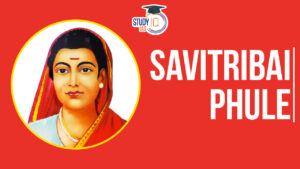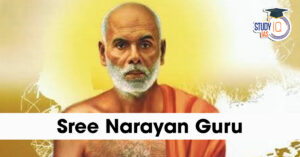Table of Contents
Lal Bahadur Shastri Biography
The second Prime Minister of an independent India was Lal Bahadur Shastri. After the unexpected passing of the first Prime Minister, Jawaharlal Nehru, he took the oath. He was very fresh to the position of power when he successfully guided the nation through the Indo-Pakistan War in 1965. India remembers Lal Bahadur Shastri, a leader who steered the nation through challenges and championed self-reliance, on his 58th death anniversary on January 11, 2024.
Shastriji made the phrase “Jai Jawan Jai Kisan” well-known by emphasizing the importance of self-sufficiency and independence as the cornerstones of a powerful nation. His diminutive, weak frame and soft-spoken demeanour belied a guy of extraordinary willpower. He preferred to be known for his work than for carefully prepared speeches making lofty claims. Read this article to know about Lal Bahadur Shastri Biography, Early Life, Death Anniversary, Political Career and more.
Lal Bahadur Shastri Early Life & Education
- Ramdulari Devi and Sharada Prasad Shrivastava welcomed Lal Bahadur Shastri into the world on October 2, 1904 in Mughalsarai, United Provinces (modern-day Uttar Pradesh).
- The nation’s founding father, Mahatma Gandhi, also has the same birthday as him. Lal Bahadur wanted to abandon his last name because he disagreed with the current caste system.
- After he graduated from Kashi Vidyapeeth in Varanasi in 1925, he was given the title “Shastri.” A “scholar” or someone skilled in the “Holy Scriptures” is referred to by the term “Shastri”.
- When Lal Bahadur was just two years old, his father Sharada Prasad, a schoolteacher by profession, went away.
- He and his two sisters were taken to their maternal grandfather HazariLal’s home by their mother Ramdulari Devi.
- In his early years, Lal Bahadur learned the virtues of bravery, love of exploration, patience, self-control, courtesy, and selflessness.
- Lal Bahadur was moved to Varanasi to finish his primary schooling there before staying with his maternal uncle.
- The youngest daughter of Ganesh Prasad, Lalita Devi, was married to Lal Bahadur Shastri in 1928.
- He declined to accept dowry because he disagreed with the current “dowry system.” But after persistent prodding from his father-in-law, he consented to accept as dowry merely five yards of khadi (cotton that is often handspun). The couple has six kids.
Lal Bahadur Shastri Death Anniversary
- Lal Bahadur Shastri, who had already experienced two heart attacks, passed away on January 11, 1966, from a third cardiac arrest.
- The only current Indian Prime Minister to have passed away abroad is he. In 1966, Lal Bahadur Shastri received a posthumous Bharat Ratna, India’s highest civilian honour.
Reasons of Lal Bahadur Shastri Death
- Many questions were raised when Shastri passed away unexpectedly soon after agreeing to the Tashkent Pact with Pakistan.
- Shastri was allegedly poisoned, and the Russian butler who was serving the Prime Minister was detained, according to his wife Lalita Devi. However, he was later freed after medical experts determined that Shastri had died of heart arrest.
- The CIA may have been involved in Shastri’s death, according to a potential conspiracy theory that was reported in the media.
- The Prime Minister’s Office rejected the RTI request made by author Anuj Dhar, citing a potential deterioration in relations with the US.
Lal Bahadur Shastri Jayanti
Lal Bahadur Shastri Jayanti is celebrated every year on 2 October. His birthday coincides with the birthday of Mahatma Gandhi. Most of the people know only about Gandhi Jayanti on this day. However, it would be pertinent to mention that both the great heroes born on this day dedicated their lives to the greater cause of the nation. Celebrations are organized across the country in memory of the two patriots for their struggle in the Indian independence movement. This day is also celebrated as Peace Day in some places.
Lal Bahadur Shastri Jayanti: Reason for Celebration
The purpose of celebrating the birth anniversary of Lal Bahadur Shastri is as follows:
- The occasion of October 2 marks the birth of two national heroes, so all celebrations to celebrate this day usually have the same agenda.
- Lal Bahadur Shastri and Mahatma Gandhi are honoured and their contribution to the country is remembered.
- Lal Bahadur Shastri Jayanti is celebrated with great enthusiasm by the farmers because of the great leader’s deep involvement in his life and all matters related to development in agriculture.
- Lal Bahadur Shastri was a great leader of the Indian freedom struggle.
- Shastri ji served India as the Prime Minister after Jawaharlal Nehru.
- Lal Bahadur Shastri faced the Indo-Pak war against Pakistan in 1965 and led the country to success.
- Lal Bahadur Shastri gave the slogan “Jai Jawan, Jai Kisan”
Lal Bahadur Shastri Prominence in Indian National Congress
After India gained independence in 1947, Shastri joined the Indian National Congress, the leading political party at the time. He quickly rose through the ranks, serving in various capacities within the party and the government.
Lal Bahadur Shastri Political Career
Pre-independence Activism
Young Lal Bahadur became motivated to join the Indian nationalist movement after being moved by the tales and speeches of national leaders. Additionally, he enjoyed reading international writers like Marx, Russell, and Lenin. After hearing a speech by Mahatma Gandhi in 1915, he decided to actively take part in the movement for India’s independence.
Post-independence
Before becoming the Prime Minister of India, Lal Bahadur Shastri held several jobs. He was appointed the Minister of Police in the Govind Vallabh Panth Ministry of Uttar Pradesh following Independence. His advice included the use of “water jets” as opposed to lathis to scatter the unruly crowd. Shastri was invited to join the Union cabinet as Minister for Railways by Jawaharlal Nehru after being impressed with his attempts to modernize the state police force.
| Timeline |
Details |
| 1947 | Shastri was chosen to serve as Uttar Pradesh’s Parliamentary Secretary.
Later, in 1947, he was appointed Chief Minister Govind Ballabh Pant’s Minister of Police and Transport. He was the first to hire female conductors. |
| 1951 | When Jawaharlal Nehru became prime minister, he was appointed general secretary of the All India Congress Committee. |
| 1952 | He was expected to continue serving as the home minister of Uttar Pradesh after winning the UP Vidhansabha seat from Saraon North and Phulpur West. But Nehru rather appointed him to the central government as the first cabinet of the Republic of India’s Ministry of Railways and Transport. |
| 1956 | In Tamil Nadu, two train accidents resulted in 144 fatalities, and he resigned because he felt accountable as the highest authority. |
| 1959 | He was rehired as the minister of business and industry. |
| 1961 | He was appointed as the minister of internal affairs. |
Achievements of Lal Bahadur Shastri
- Shastri served as the Minister of Railways in Jawaharlal Nehru’s cabinet and played a crucial role in improving India’s rail infrastructure.
- He was known for his unwavering commitment to Gandhian principles of simplicity and honesty.
- Shastri became the Prime Minister of India in 1964, following Nehru’s death.
- His tenure was marked by several significant events, including the Indo-Pakistani War of 1965.
Lal Bahadur Shastri as Prime Minister of India
On June 9th, 1964, the mild-mannered and soft-spoken Lal Bahadur Shastri took over for Jawaharlal Nehru. Even though the Congress had several more powerful leaders, Shastri became the consensus choice after Nehru’s untimely death. Shastri, a supporter of Nehruvian socialism, exhibited great composure in trying circumstances.
Shastri addressed several basic issues such as the lack of food, unemployment, and poverty. Shastri requested the experts to develop a long-term plan to deal with the severe food scarcity. This marked the start of the infamous “Green Revolution.” He contributed to the promotion of the White Revolution in addition to the Green Revolution. During Shastri’s time as prime minister in 1965, the National Dairy Development Board was established.
During Shastri’s presidency, India experienced another aggression in 1965 from Pakistan following the Chinese aggression of 1962. Shastri demonstrated his mettle by making it abundantly apparent that India will not merely stand by. He said, “Force will be confronted with force,” while giving the Security Forces freedom to counterattack.
On September 23, 1965, the Indo-Pak War came to an end as the United Nations voted a resolution calling for a truce. On January 10, 1966, Lal Bahadur Shastri and his Pakistani counterpart Ayub Khan signed the Tashkent Declaration after Russian Prime Minister Kosygin promised to intercede.
Lal Bahadur Shastri and India’s Foreign Relations
Indo-Ceylon Agreement/ Bhandarnaike-Shastri Pact
It was a pact that the prime ministers of the two nations signed in 1964. The agreement had a profound impact on the status and future of Indian-born residents of Ceylon (later Sri Lanka), who were the offspring of British-transported tea estate labourers.
Burma
Following a military takeover in 1962, Burma deported some Indian families in 1964, which put the two countries’ relations under strain. In 1965, Shastriji paid an official visit to Rangoon, and friendly relations between the two countries were once more established.
Indo-Pak war of 1965
The Second Kashmir conflict, sometimes known by that name, was the result of multiple clashes between Pakistan and India in 1965. Shastriji led India in the battle valiantly despite being a strong adherent of Gandhiji’s concept of non-violence. The conflict started with Pakistan’s operation Gibraltar to sneak forces into Jammu and Kashmir.
“Jai Jawan, Jai Kisan” was the slogan he used when addressing the country, paying homage to the border soldiers and the farmers battling the food crisis. The Soviet Union and the United States intervened diplomatically, resulting in the Tashkent Declaration, which led to the UNSC resolution 211 declaring a truce and ending the hostilities.
Lal Bahadur Shastri Legacy
Lal Bahadur Shastri was India’s most upright prime minister and politician. He was a faithful adherent of Gandhi’s idea to not gain wealth or personal property, even though he was a minister. In 1966, he received the Bharat Ratna posthumously, and the same year, a stamp honouring him was also issued.
As he always preferred to maintain friendly relations with the neighbours by nonviolent means, he was known as “The Man of Peace.” The Lal Bahadur Shastri National Academy (LBSNAA) of Administration is the name of the IAS training facility in Mussoorie.


 Savitribai Phule Biography, Early Life, ...
Savitribai Phule Biography, Early Life, ...
 Tansen Biography, Musical Legacy and Mas...
Tansen Biography, Musical Legacy and Mas...
 Sree Narayana Guru (1856–1928), Key Mo...
Sree Narayana Guru (1856–1928), Key Mo...





















